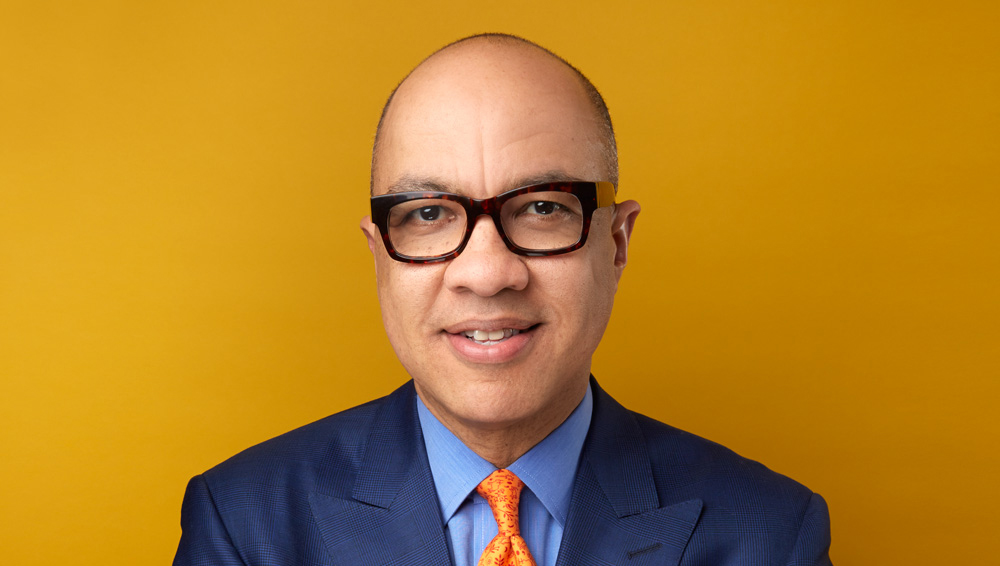A billion here, a billion there, and pretty soon we’re talking about a new way to use market forces to combat poverty and injustice.
That’s the hope of the Ford Foundation, which today announced that its trustees have authorized $1 billion in “mission-related investments” from its $12 billion endowment. The initial investments will be made through private funds targeting affordable housing in the U.S. and access to financial services in emerging growth markets around the world.
Ford’s decision to deploy endowment dollars, along with grants, toward its philanthropic mission represents a significant expansion of the tools the foundation has at its disposal. It’s the largest such commitment to mission-related investments to date by a private foundation. Darren Walker, Ford’s president, is sending a signal to other foundations: impact investing from philanthropic endowments is on.
“We have come to believe that if we expect to overcome the forces of injustice and inequality, we need to expand our imaginations and our arsenals,” Walker wrote, in a post on the foundation’s website. “We must begin to more deliberately leverage the power of our endowment.”
Historically, most U.S. foundations have pursued their missions through grants. Their endowments, which have grown to $650 billion in assets, were invested using traditional approaches to generate returns to finance the grantmaking and internal operations. Tax regulations require foundations to disburse an average of only five percent of their assets in grants each year. That means that out of all the tax-advantaged assets held by foundations, only about $32 billion is directed toward their philanthropic missions each year.
Ford’s grants have helped catalyze the Green Revolution, boost micro-finance and support the civil rights movements for women and African-Americans, in the U.S. and Latin America. But Walker concluded that Ford’s five percent — its annual grants budget of about $500 million — may not alone move the needle on poverty and injustice, while beginning to tap the other 95 percent might.
“If philanthropy’s last half-century was about optimizing the five percent,” writes Walker, “Its next half-century will be about beginning to harness the 95 percent as well, carefully and creatively.”
Ford plans to phase in the billion-dollar commitment over ten years. It will initially target sectors in which the foundation has expertise: affordable housing in the U.S. and inclusive financial services in emerging markets. It will not make direct investments into companies but will invest through private funds. Ford officials pledged to make its financial and impact performance “completely transparent.”
Ford named Xavier de Souza Briggs, the foundation’s vice president of economic opportunity and markets, to lead the newly created mission-investing team. His team of financial analysts and advisors will report to the program leadership rather than the endowment investment team. The team will be diverse and inclusive, says Ford, as will the teams it invests in. Christine Looney will continue to lead Ford’s PRI investments.
Unlocking endowments
Ford’s is the largest endowment commitment to MRIs by a private foundation, but not the first. The Kresge Foundation, in Detroit, announced last year a $350 million commitment to MRIs and program-related investments from its $3.6 billion endowment. Other foundations, including McKnight and the Wallace Global Fund, are also pursuing mission-related investments. FB Heron Foundation, with assets of around $250 million, recently announced it had fully invested its endowment to pursue its mission to fight poverty.
Fifty years ago, Ford pioneered the use of a related foundation tool, program-related investments. Such “PRIs,” which count against the 5 percent grant-distribution requirement, come with stricter tax rules, which specify that their intent must be primarily charitable, with financial returns only secondary. Ford has made more than $670 million in program-related investments since the IRS authorized them in 1968.
Ford’s PRIs have helped to preserve affordable housing, improve access to financial services, create good jobs and advance the arts. “We have found PRIs to be one of the most effective arrows in our quiver,” said Walker.
Walker has worked to add more arrows to that quiver since arriving at Ford in 2013. Philanthropy alone isn’t enough to solve what he views as systemic problems. “It is not lost on my colleagues and me that the very same systems that produce inequality also created our endowment,” he wrote. Now, the foundation has the responsibility “to help influence the very markets that allow us to operate.”
Significant too, in the foundation’s decision, is growing confidence that mission-driven investments in capital markets can yield adequate financial and social returns. In 2015, the Obama administration clarified a regulation that some foundations, including Ford, viewed as a barrier to the use of MRIs. The IRS said that MRIs need not “jeopardize” the foundation’s charitable assets, removing one objection to Walker’s initiative.
Maturing market
Walker pounced. “I no longer find it defensible to say that our investment strategy is only to maximize the value of our endowment,” Walker wrote in a public message following the IRS decision. “There is growing evidence that it is possible to find impact investing opportunities that deliver financial and social, double bottom-line returns.”
The growing evidence, and ability to measure, that, at least in some cases, impact investments can achieve both satisfactory returns and impact (see here and here) helped Walker make the case to Ford’s trustees.
Walker tempered expectations. “We know that a billion dollars…is not nearly enough to grow and prove this space.” But, he added, “My hope is that, before long, many more foundations, of all kinds and sizes, will find ways to tap the power of their own endowments to help contribute to multiple bottom lines.”
And not just foundations, he says. “Pension funds, university endowments, sovereign wealth funds, and others can do the same, in ways consistent with their respective missions, expertise, and fiduciary obligations.”
“Institutional investors can begin to move from “do no harm,” he said, toward “do more good.”
Photo credit: University of Texas at Austin











